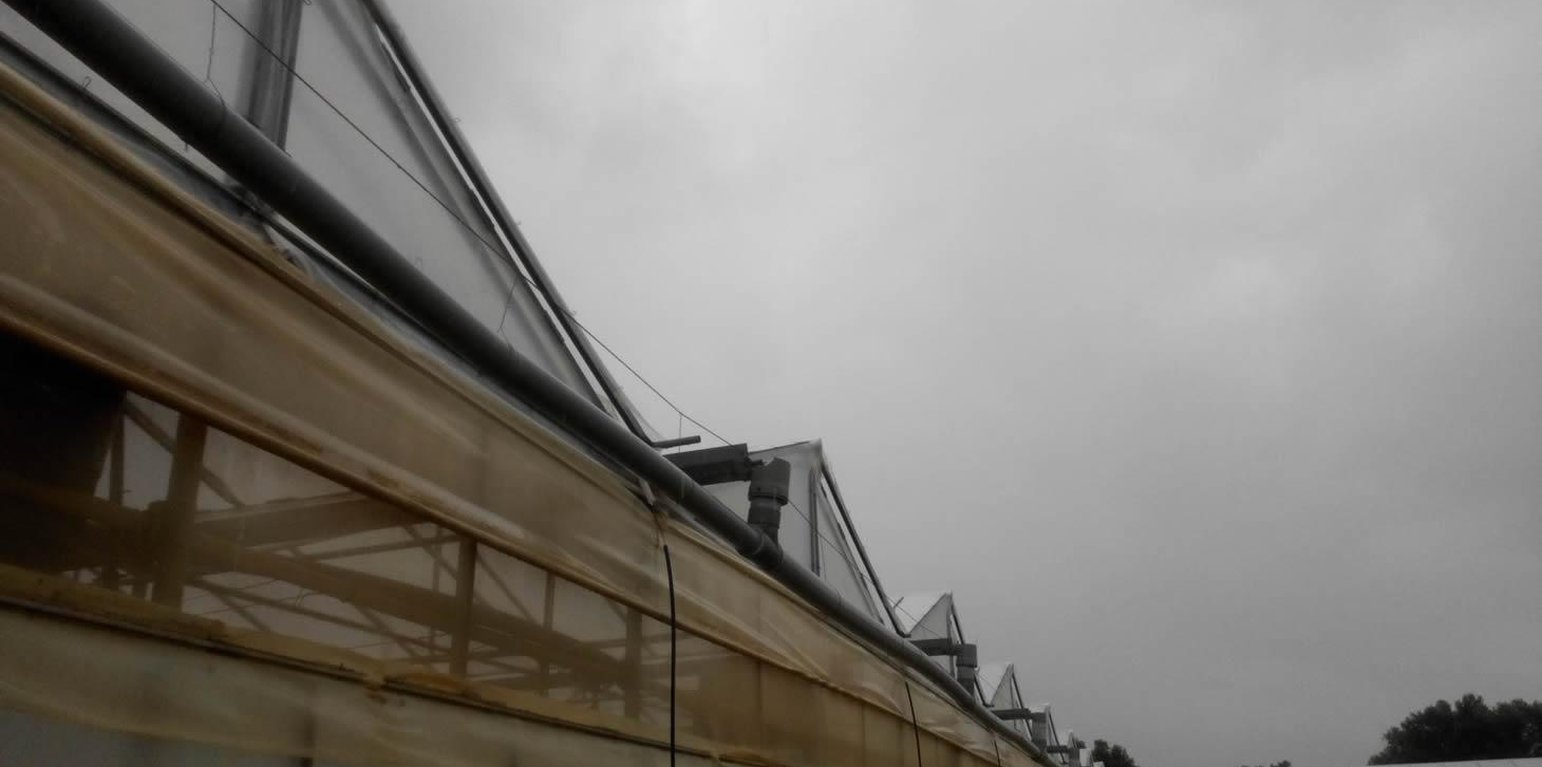



The roof of a greenhouse is used as catchment area for rainwater harvesting. A system of gutters is installed to channel water into a storage facility that can be either above ground or at ground level, open or covered. The water harvested from the roofs is used for irrigation purposes, either on its own or mixed with other sources.
In central and eastern Crete, a negative water balance emerges due to agricultural exploitation and lack of sustainable water resources management. Regarding water availability, it is notable that the spatial and temporal variability of precipitation are the limiting factors, rather than overall precipitation quantity. Especially in coastal areas where the main source of irrigation is groundwater, seawater intrusion often takes place, and eventually leading to irrigation with saline water. In the intensive agriculture and water stress conditions existing in greenhouses this situation can progressively lead to soil salinisation with subsequent adverse effects on production. The technology promotes sustainable land management through prevention and mitigation of land degradation by increasing water resources self-sufficiency thus allowing the user to rely less on the scarce groundwater resources and reduce the risk of production failure. Furthermore, the technology improves the overall irrigation water quality. The main disadvantage of the technology is the increase of agricultural inputs (fertilizers) because of the lack of minerals necessary for the crops (especially tomatoes) in the rainwater. This disadvantage can be mitigated by mixing rainwater with other sources.
The majority of the greenhouses in the region normally have built-in gutters between the basic construction units in order to discharge rainwater from the roof for structural safety. Thus, initially little structural measures are required including the implementation of some further gutters that channel rainwater in the storage system and preparation of the area for the tank installation. Overland tanks may consist of galvanized steel or similar material. Ground level storage usually requires earth removal. In both case, the installation of the relevant waterproofing material is required to avoid leaks. A cover may also be installed to reduce evaporation. Here we assess the use of a harvesting system comprising of (a) an above ground circular tank made out of galvanized steel with total volume of 320 m3 and (b) a gutter network spreading on the roof of a 0.7 ha greenhouse. Furthermore, a water filter and water treatment may be required for removal of particles and waterborne disease mitigation. Finally, a suitable pump and mixing facilities are installed to control water quality and quantity.
The average annual precipitation in the area is 500 mm and the climate ranges between sub-humid Mediterranean and semi-arid. Average annual temperature is 18.5 °C with 6 months below 18 °C but above 5 °C, thus classifying the area as subtropical. In the location where the technology is applied, land is mostly privately owned and water rights can be public, cooperative or private. Although the financial means of the land user who applies this technology are more or less on par with those of the rest of the community, he has a wider empirical education and relatively higher social status acquired thought his involvement with the commons and the water resources management of the region.
This Technology was documented within the scope of FP7 RECARE Project, funded grant agreement no 603498.
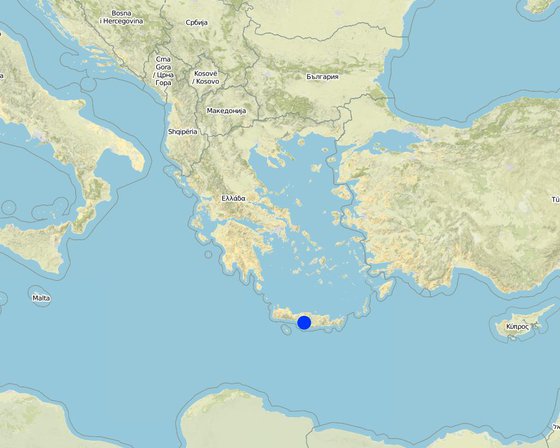
Lieu: Timpaki, Heraklion, Grèce
Nbr de sites de la Technologie analysés:
Diffusion de la Technologie:
Dans des zones protégées en permanence ?:
Date de mise en oeuvre: il y a entre 10-50 ans
Type d'introduction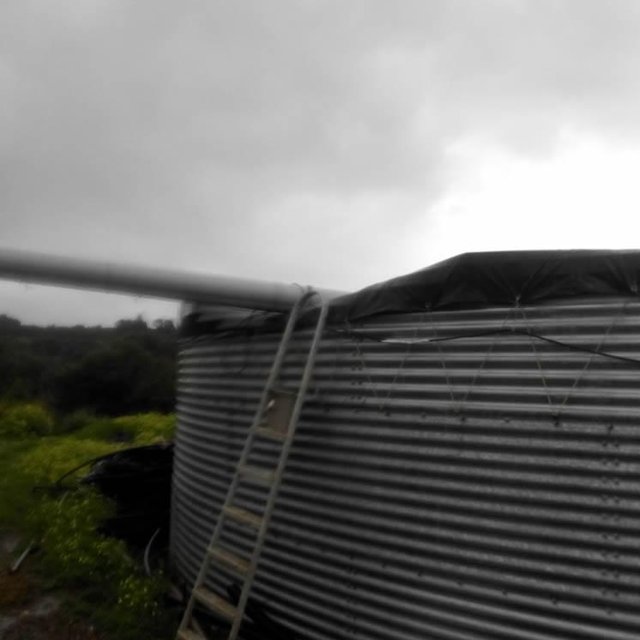

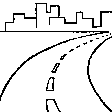




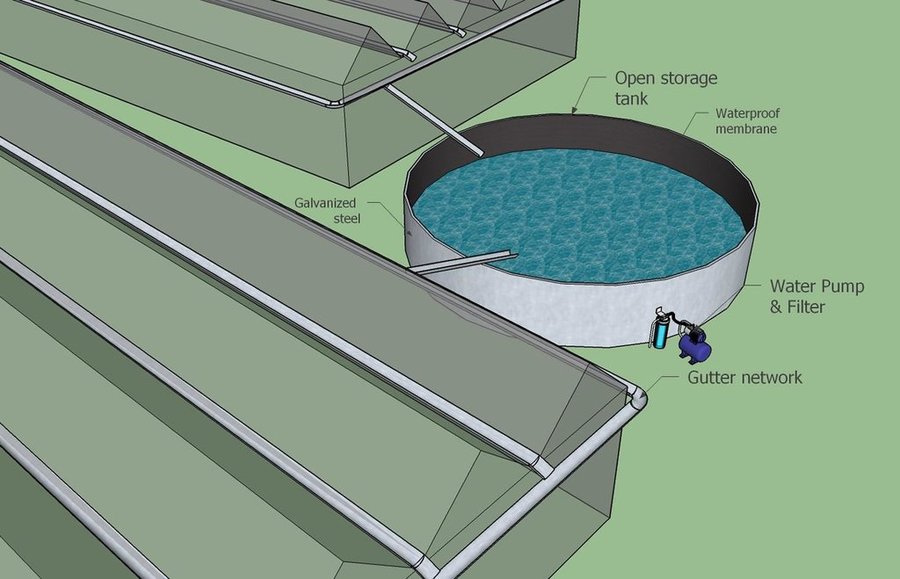
| Spécifiez les intrants | Unité | Quantité | Coûts par unité (Euro) | Coût total par intrant (Euro) | % des coût supporté par les exploitants des terres |
| Main d'œuvre | |||||
| Labour | 1,0 | 858,0 | 858,0 | 60,0 | |
| Equipements | |||||
| pump | 1,0 | 536,0 | 536,0 | 60,0 | |
| cleaning filter | 1,0 | 536,0 | 536,0 | 60,0 | |
| Matériaux de construction | |||||
| galvanized steel | 1,0 | 3379,0 | 3379,0 | 60,0 | |
| waterproof membrane | 1,0 | 2360,0 | 2360,0 | 60,0 | |
| sand | 1,0 | 675,0 | 675,0 | 60,0 | |
| concrete | 1,0 | 290,0 | 290,0 | 60,0 | |
| Autre | |||||
| gutters | 1,0 | 2252,0 | 2252,0 | 60,0 | |
| Coût total de mise en place de la Technologie | 10'886.0 | ||||
| Coût total de mise en place de la Technologie en dollars américains (USD) | 11'705.38 | ||||
softer water (rainwater) requires more expensive fertilisers
Depending on relative farm size.
The technology reduces production risk and increases self sufficiency for the user who implements it. If the technology is widely implemented this will have a positive impact on the soil sustainability of the area thus allowing agricultural exploitation for longer. It will also greatly reduce water use conflicts, thus contributing to the general well-being of the local community.
control of the water from the greenhouses roofs.
control of the water from the greenhouses roofs.